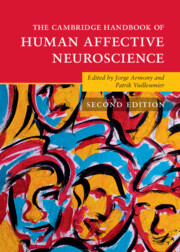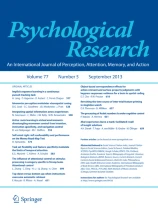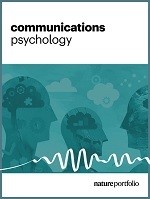Publications from WANDERS
2025

Mennella, Rocco; Grèzes, Julie
How Emotional Expressions Motivate Action Chapitre d'ouvrage
Dans: Armony, Jorge; Vuilleumier, Patrik (Ed.): The Cambridge Handbook of Human Affective Neuroscience, p. 408 - 424, Cambridge University Press, 2025.
@inbook{nokey,
title = {How Emotional Expressions Motivate Action},
author = {Rocco Mennella and Julie Grèzes},
editor = {Jorge Armony and Patrik Vuilleumier},
doi = {10.1017/9781009342919.026},
year = {2025},
date = {2025-09-16},
booktitle = {The Cambridge Handbook of Human Affective Neuroscience},
pages = {408 - 424},
publisher = {Cambridge University Press},
abstract = {Social adaptation requires humans to respond to others’ nonverbal emotional cues by selecting and executing adaptive motor responses. In this chapter, we provide a general overview of how visual perception of others’ emotional expressions, particularly threatening faces and bodies, promotes rapid processing and elaboration of multiple opportunities for action, at different levels of complexity. Notably, we will highlight how subcortical and cortical neural pathways interact to flexibly orchestrate our social behavior in response to threatening expressions, ranging from simple stimulus-driven reactions to more elaborated goal-directed actions. We will review recent findings from research on humans and other animals and discuss clinical implications, as well as future challenges and perspectives.},
keywords = {},
pubstate = {published},
tppubtype = {inbook}
}

Mennella, Rocco; Quesque, François
Are kinematic encoding and kinematic readout reciprocal phenomena? - Comment on Article de journal
Dans: Physics of Life Reviews, 2025, ISSN: 1571-0645.
@article{mennella_are_2025,
title = {Are kinematic encoding and kinematic readout reciprocal phenomena? - Comment on },
author = {Rocco Mennella and François Quesque},
url = {https://www.sciencedirect.com/science/article/pii/S1571064525000624},
doi = {10.1016/j.plrev.2025.04.011},
issn = {1571-0645},
year = {2025},
date = {2025-04-01},
urldate = {2025-04-01},
journal = {Physics of Life Reviews},
keywords = {},
pubstate = {published},
tppubtype = {article}
}
Publications related to WANDERS
2024

Mennella, Rocco; Bazin, Sabine; Ferrel, Carole; Vernazza-Martin, Sylvie; Beaurenaut, Morgan
The effect of anxiety on gait: a threat-of-scream study Article de journal
Dans: Psychological Research, vol. 89, no. 1, p. 14, 2024, ISSN: 1430-2772.
@article{mennella_effect_2024,
title = {The effect of anxiety on gait: a threat-of-scream study},
author = {Rocco Mennella and Sabine Bazin and Carole Ferrel and Sylvie Vernazza-Martin and Morgan Beaurenaut},
url = {https://doi.org/10.1007/s00426-024-02039-3},
doi = {10.1007/s00426-024-02039-3},
issn = {1430-2772},
year = {2024},
date = {2024-11-01},
urldate = {2024-11-01},
journal = {Psychological Research},
volume = {89},
number = {1},
pages = {14},
abstract = {It is known that fear responses to clearly identified threats can inhibit motion, slowing down gait and inducing postural freezing. Nonetheless, it is less clear how anxiety, which emerges during threat anticipation, affects gait parameters. In the present work, we used a threat-of-scream paradigm to study the effects of anxiety on gait. Twenty-five participants (15 female, aged 23.4 ± 1.8) were instructed to walk on a 5-m walking track, while motion was recorded in 3D, via a VICON system. Four alternating blocks, two “threat” and two “safe” blocks of 10 trials each, were signaled by colored stripes on a screen in front of the walking path. Participants were informed that they could hear a human scream in their headphones at any time during threat blocks, which were in fact always delivered during walking. On the contrary, no screams were delivered in the safe blocks. Results indicated that participants reported higher subjective anxiety during threat vs. safe blocks. Furthermore, increases in self-reported anxiety from safe to threat showed significant moderate correlations with increased stride speed and length, decreased stride time and decreased stance phase duration. Increases in anxiety were also moderately correlated with increased arm/leg swing amplitude, an effect that was fully mediated by increased stride speed. Overall, these results indicate that anxiety invigorates motion in healthy subjects, by increasing speed. These results are discussed in terms of the recent advancements in the understanding of defensive behavior, its neural correlates and on clinical implications relative to pathological anxiety.},
keywords = {},
pubstate = {published},
tppubtype = {article}
}

Sequestro, Matteo; Serfaty, Jade; Grèzes, Julie; Mennella, Rocco
Social threat avoidance depends on action-outcome predictability Article de journal
Dans: Communications Psychology, vol. 2, no. 1, p. 1–17, 2024, ISSN: 2731-9121, (Publisher: Nature Publishing Group).
@article{sequestro_social_2024,
title = {Social threat avoidance depends on action-outcome predictability},
author = {Matteo Sequestro and Jade Serfaty and Julie Grèzes and Rocco Mennella},
url = {https://www.nature.com/articles/s44271-024-00152-y},
doi = {10.1038/s44271-024-00152-y},
issn = {2731-9121},
year = {2024},
date = {2024-10-01},
urldate = {2024-10-01},
journal = {Communications Psychology},
volume = {2},
number = {1},
pages = {1–17},
abstract = {Avoiding threatening individuals is pivotal for adaptation to our social environment. Yet, it remains unclear whether social threat avoidance is subtended by goal-directed processes, in addition to stimulus-response associations. To test this, we manipulated outcome predictability during spontaneous approach/avoidance decisions from avatars displaying angry facial expressions. Across three virtual reality experiments, we showed that participants avoided more often when they could predict the outcome of their actions, indicating goal-directed processes. However, above-chance avoidance rate when facing unpredictable outcomes suggested that stimulus-response associations also played a role. We identified two latent classes of participants: the “goal-directed class” showed above-chance avoidance only in the predictable condition, while the “stimulus-response class” showed no credible difference between conditions but had a higher overall avoidance rate. The goal-directed class exhibited greater cardiac deceleration in the predictable condition, associated with better value integration in decision-making. Computationally, this class had an increased drift-rate in the predictable condition, reflecting increased value estimation of threat avoidance. In contrast, the stimulus-response class showed higher responsiveness to threat, indicated by increased drift-rate for avoidance and increased muscular activity at response time. These results support the central role of goal-directed processes in social threat avoidance and reveal its physiological and computational correlates.},
note = {Publisher: Nature Publishing Group},
keywords = {},
pubstate = {published},
tppubtype = {article}
}
2023

Grèzes, Julie; Risch, Nathan; Courtet, Philippe; Olié, Emilie; Mennella, Rocco
Depression and approach-avoidance decisions to emotional displays: The role of anhedonia Article de journal
Dans: Behaviour Research and Therapy, vol. 164, p. 104306, 2023, ISSN: 00057967.
@article{grezes_depression_2023,
title = {Depression and approach-avoidance decisions to emotional displays: The role of anhedonia},
author = {Julie Grèzes and Nathan Risch and Philippe Courtet and Emilie Olié and Rocco Mennella},
url = {https://linkinghub.elsevier.com/retrieve/pii/S0005796723000554},
doi = {10.1016/j.brat.2023.104306},
issn = {00057967},
year = {2023},
date = {2023-05-01},
urldate = {2023-05-01},
journal = {Behaviour Research and Therapy},
volume = {164},
pages = {104306},
abstract = {Depression is linked to dysfunctional appetitive and aversive motivational systems and effort-based decisionmaking, yet whether such deficits extend to social decisions remains unclear. Participants (23 non-depressed, 48 depressed – 24 with a past history of suicide attempt) completed a social decision-making task consisting in freely choosing whether to approach or avoid individuals displaying happy or angry expressions. Occasionally, par ticipants had to make a further effort (change button press) to obtain the desired outcome. All participants preferentially avoided anger on their first choice. Yet, depressed patients less often chose to approach happy individuals, as a function of anhedonia severity. Depressed patients were also less inclined than controls to change their response when the anticipated outcome of their first choice was undesirable (approach angry and avoid happy). Again, such effect correlated with anhedonia severity. Our results support that both altered valuation and willingness to exert effort impact approach-avoidance decisions in social contexts in depression. On this basis, we propose a new integrating framework for reconciling different hypotheses on the effect of depression and anhedonia on motivational responses to emotional stimuli.},
keywords = {},
pubstate = {published},
tppubtype = {article}
}
